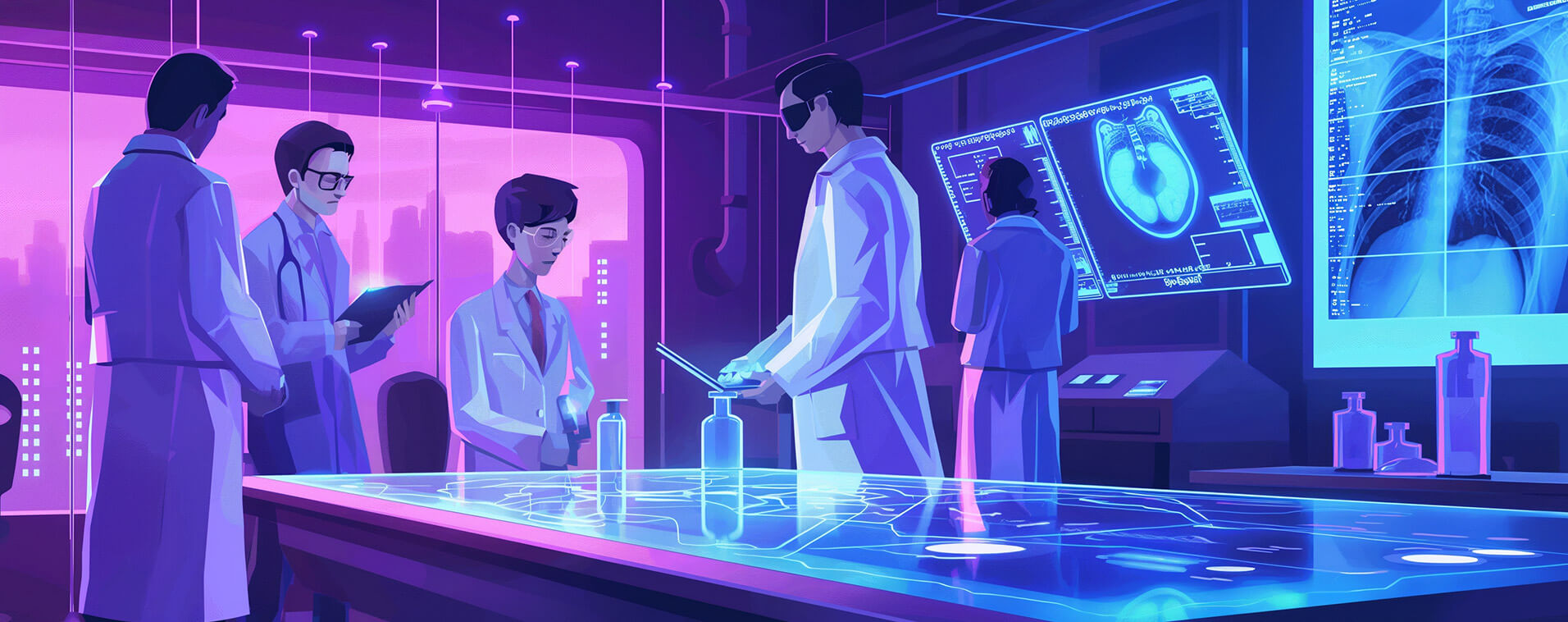
Google's AMIE: Transforming Medical Diagnostics with AI
- Introduction to Google AMIE: Revolutionizing Medical Diagnostics with AI
- How Google Upgraded AMIE’s Reasoning Capabilities
- Limitations
- Conclusion
In its latest research on AMIE (Articulate Medical Intelligence Explorer), Google is expanding the capabilities of its diagnostic AI to include understanding visual medical content [1][2]. AMIE is a research AI system built on a large language model and optimized for medical diagnostic reasoning and conversations [3]. The US-based tech giant has upgraded the system to process visual medical information or analyze clinical visuals, enabling it to reason more holistically like a trained physician [2]. This development brings AI one step closer to mimicking the way real doctors diagnose their patients' medical images [2]. Imagine having a conversation with an AI about your health issues and instead of just analyzing your symptoms based on a description, it could actually interpret and analyze your medical images [1]. That's the goal Google is aiming for [1]. Doctors rely heavily on what is visually observable, skin conditions, machine readings, and lab test reports, and as the Google team rightly points out, even simple instant messaging platforms enable static multimodal information (e.g., images and documents) to enrich conversations[1]. In this article, we’ll explore how Google enhanced AMIE’s reasoning capabilities and what limitations still need to be overcome.
To enhance AMIE’s medical reasoning capabilities, Google integrated the Gemini 2.0 Flash model and introduced a "state-aware reasoning framework” [2]. This allows AMIE to dynamically adapt its questions and responses throughout a conversation, much like a real doctor would [2]. It can identify gaps in information, request additional inputs such as images or scan results, and refine its diagnostic reasoning in real time [2]. For instance, if AMIE detects missing information, it can request a photo of a skin condition or an ECG scan, interpret that visual data, and incorporate the findings into its clinical dialogue [2]. To train AMIE without risking patient safety, Google developed a virtual medical simulation lab [2]. These cases drew from real-world datasets like the PTB-XL ECG database and the SCIN dermatology set, combined with detailed patient histories crafted using Gemini [2]. AMIE engaged in these simulations by “having a conversation” with virtual patients, being automatically graded on diagnostic accuracy, error prevention, and its ability to reason through complex clinical scenarios [2]. This allowed it to refine its skills in a controlled, yet challenging, learning environment.
The system was then tested in a setting modeled after the Objective Structured Clinical Examination (OSCE), a rigorous standard for assessing medical students [2]. In this trial, 105 diverse cases were presented to either AMIE or human primary care physicians through chat-based consultations with trained actors portraying patients [2]. Specialist physicians and the actors then evaluated each session, assessing factors such as diagnostic accuracy and the level of empathy shown [2][3]. The results were compelling: AMIE outperformed human doctors in interpreting images, generating comprehensive differential diagnoses, and offering appropriate management plans. It also received higher ratings for empathy and trustworthiness from patient actors during the text-based chats [2]. There was no notable difference in error rates ("hallucinations") between AMIE and the doctors when interpreting images [2]. Google also tested the newer Gemini 2.5 Flash model, which showed further improvements in diagnostic accuracy and treatment recommendations [2].
Despite the promising outcomes, Google underlined several limitations of its research that should be considered when interpreting the results. Firstly, the study was conducted in a controlled, research-only setting, which does not fully reflect the real-world healthcare environments [3]. The chat interface cannot fully capture the nuances of in-person or video consultations, and simulated patients, despite being trained actors, can only provide a limited representation of actual clinical interactions [2]. While this setup allowed large-scale LLM–patient interactions, it does not reflect typical clinical practice [3]. Furthermore, the study served as an initial exploratory step, and transitioning from the research prototype to a reliable tool for widespread clinical use will require extensive additional research [3]. There are many important limitations to be addressed, including assessing performance under real-world conditions and addressing critical issues like health equity, fairness, privacy, and robustness, all of which are essential for ensuring the technology’s safety and reliability [3].
Google’s work on AMIE (Articulate Medical Intelligence Explorer) demonstrates the potential of AI to not only understand patient symptoms through text but also analyze complex visual data, much like a trained physician. This multimodal approach enhances diagnostic accuracy and brings AI closer to supporting real-time, adaptive clinical decision-making. In research simulations, AMIE has shown impressive results, outperforming human doctors in several diagnostic tasks and even receiving higher ratings for empathy and trustworthiness in text-based consultations. Despite these promising developments, turning AMIE into a dependable tool for real-world clinical use remains a major challenge. The system was tested in simulated environments with controlled variables, which do not fully reflect the complexity, unpredictability, and emotional nuance of actual healthcare settings. Bridging this gap will require extensive testing in diverse, real-world environments and addressing key issues like fairness, patient privacy, robustness, and health equity. While AMIE offers a glimpse into how AI might revolutionize medicine, achieving that vision responsibly will demand careful, transparent research and collaboration with the broader medical community.
Notes and References
- Daws, R. (2025, May 2). Google AMIE: AI Doctor Learns To “See” Medical Images - AI News. https://www.artificialintelligence-news.com/news/google-amie-ai-doctor-learns-to-see-medical-images/
- Simic, D. (2025, May). Google’s AMIE AI Now Sees What Doctors See: A New Era for Diagnostic Chatbot - LinkedIn Post. https://www.linkedin.com/pulse/googles-amie-ai-now-sees-what-doctors-see-new-era-diagnostic-simic-cfwac/
- Karthikesalingam, A., & Natarajan, V. (2024, January 12). AMIE: A Research AI System for Diagnostic Medical Reasoning and Conversations - Google Research. https://research.google/blog/amie-a-research-ai-system-for-diagnostic-medical-reasoning-and-conversations/
